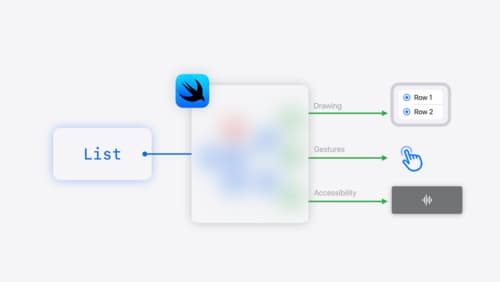How to implement MVVM in swift using UIKit framework?
Asked on 2024-07-27
1 search
To implement the MVVM (Model-View-ViewModel) pattern in Swift using the UIKit framework, you can follow these general steps:
-
Model: This represents the data and business logic of your application. It should be independent of the UI.
-
View: This is the UI layer, which in this case will be built using UIKit components like
UIView,UIViewController, etc. -
ViewModel: This acts as a bridge between the Model and the View. It holds the data that the View needs and handles any logic required to present that data.
Here's a basic example to illustrate the MVVM pattern in Swift using UIKit:
Model
struct User {
let name: String
let age: Int
}
ViewModel
import Foundation
class UserViewModel {
private var user: User
var name: String {
return user.name
}
var age: String {
return "\(user.age) years old"
}
init(user: User) {
self.user = user
}
}
View (ViewController)
import UIKit
class UserViewController: UIViewController {
private var viewModel: UserViewModel!
private let nameLabel: UILabel = {
let label = UILabel()
label.translatesAutoresizingMaskIntoConstraints = false
return label
}()
private let ageLabel: UILabel = {
let label = UILabel()
label.translatesAutoresizingMaskIntoConstraints = false
return label
}()
override func viewDidLoad() {
super.viewDidLoad()
setupUI()
bindViewModel()
}
private func setupUI() {
view.addSubview(nameLabel)
view.addSubview(ageLabel)
NSLayoutConstraint.activate([
nameLabel.centerXAnchor.constraint(equalTo: view.centerXAnchor),
nameLabel.centerYAnchor.constraint(equalTo: view.centerYAnchor),
ageLabel.centerXAnchor.constraint(equalTo: view.centerXAnchor),
ageLabel.topAnchor.constraint(equalTo: nameLabel.bottomAnchor, constant: 10)
])
}
private func bindViewModel() {
nameLabel.text = viewModel.name
ageLabel.text = viewModel.age
}
func configure(with viewModel: UserViewModel) {
self.viewModel = viewModel
}
}
Usage
let user = User(name: "John Doe", age: 30)
let userViewModel = UserViewModel(user: user)
let userViewController = UserViewController()
userViewController.configure(with: userViewModel)
Integrating SwiftUI with UIKit
If you want to integrate SwiftUI views within your UIKit-based MVVM architecture, you can use UIHostingController to embed SwiftUI views in your UIKit view hierarchy. For more details on this, you can refer to the session SwiftUI essentials.
For more advanced animations and transitions between SwiftUI and UIKit, you can check out the session Enhance your UI animations and transitions.
Relevant Sessions
These sessions provide deeper insights into integrating SwiftUI with UIKit and enhancing your UI with animations and transitions.

What’s new in AppKit
Discover the latest advances in Mac app development. Get an overview of the new features in macOS Sequoia, and how to adopt them in your app. Explore new ways to integrate your existing code with SwiftUI. Learn about the improvements made to numerous AppKit controls, like toolbars, menus, text input, and more.

Migrate your TVML app to SwiftUI
SwiftUI helps you build great apps on all Apple platforms and is the preferred toolkit for bringing your content into the living room with tvOS 18. Learn how to use SwiftUI to create familiar layouts and controls from TVMLKit, and get tips and best practices.

SwiftUI essentials
Join us on a tour of SwiftUI, Apple’s declarative user interface framework. Learn essential concepts for building apps in SwiftUI, like views, state variables, and layout. Discover the breadth of APIs for building fully featured experiences and crafting unique custom components. Whether you’re brand new to SwiftUI or an experienced developer, you’ll learn how to take advantage of what SwiftUI has to offer when building great apps.
